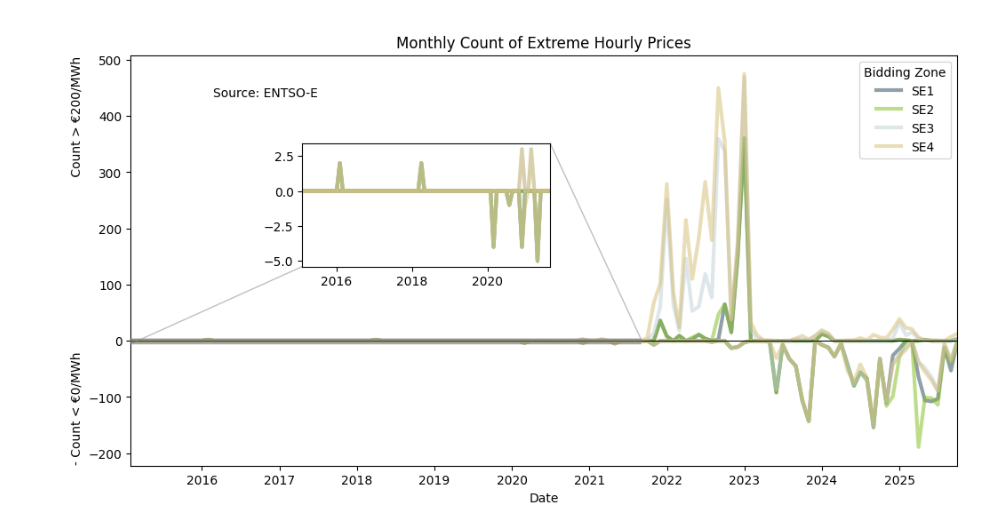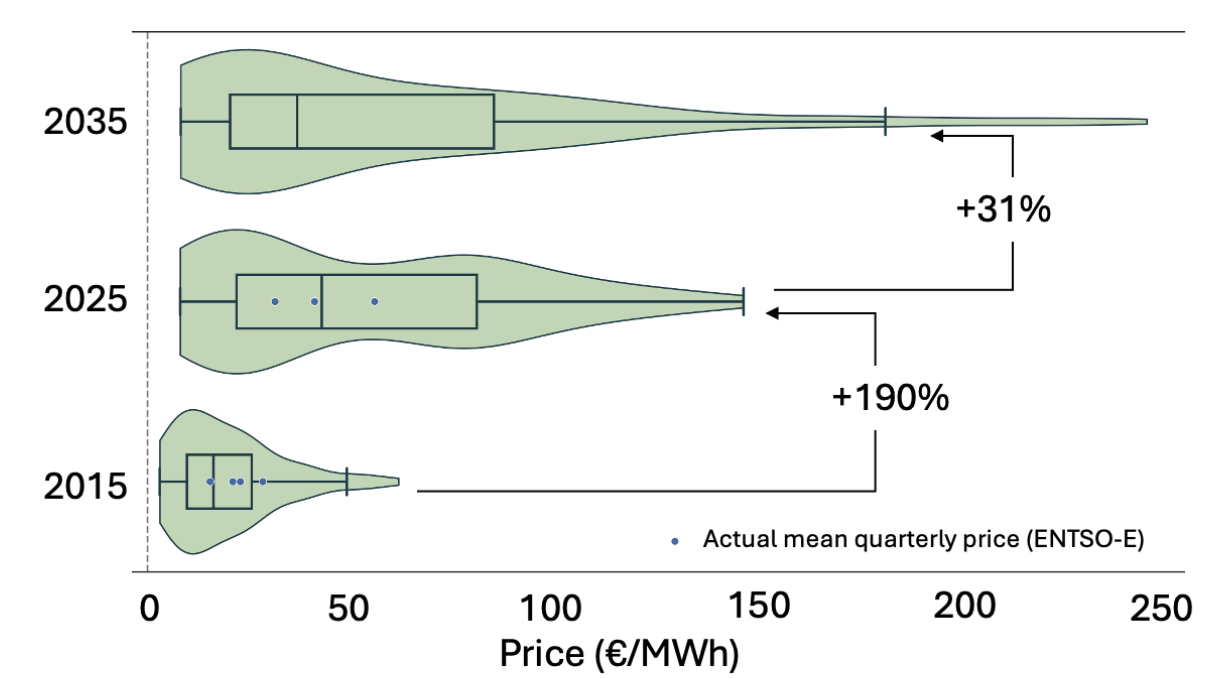As discussed in our recent post, volatile energy prices have a profound impact on both household consumers and businesses. In the case of energy-intensive industries, unpredictable energy prices make it difficult to make the forecasts required for long-term financial commitments. This level of risk can lead to delays in decision making, or even cancellations of projects. This problem also applies to investments in renewable energy projects which, while essential to the transition to a decarbonised future, need to be financially viable to operate.
Understanding the causes of price volatility is of vital importance for all participants of the energy market, especially the policymakers who can help to shield consumers and producers from its impact.
What Causes Price Volatility?

Some degree of price volatility is inherent to the energy market, caused by imbalances in supply and demand. However, there are clearly other contributing factors which have been leading to a higher volatility in recent years, which must be understood. These include:
Geopolitical Events
Political instabilities may cause supply-chain issues and market uncertainty. The war in Ukraine is a recent example, having led to huge price increases for natural gas.
Climate Change
Supply chains can be interrupted through damage from extreme weather such as storms or floods, and demand may surge in response to very high or low temperatures. A recent example of this is the 2021 Texas power crisis.
Increased Renewable Penetration
While variable renewable energy sources are a vital part of the transition to a green future, their reliance on the weather means that they can oversupply (leading to low or even negative prices) or undersupply power. In the latter case, backup power sources may use fossil fuels, meaning the market remains vulnerable to fuel price fluctuations.
Environmental policies & regulations
Regulatory changes can lead to sudden shifts to the cost of electricity and fossil fuels, adding to uncertainty for businesses. For example, adjustments to carbon pricing or emissions standards can strongly influence the cost of producing and consuming energy.
How do we Quantify Volatility?
Price volatility is clearly a multi-faceted issue which requires deep understanding of the complex energy sector. In order to condense this down into something quantifiable, we need to focus on one cause at a time.
Starting with the impact of weather on systems with high VRE penetration, we modelled power systems from 2015, 2025 and a projection for 2035 using weather data from 33 historic years. We averaged our modelled hourly spot market prices over quarters of the year, as a middle-ground approach for considering both short-term and long-term variability. In this example of the Swedish bidding zone SE3, we can see a spread which gets larger as we move towards the future projection.

Overlaid on the plot are the interquartile ranges, that is, the spread of the middle 50% of the datapoints for different weather years (excluding outliers), and the lengths of the ‘whiskers’, giving the spread of the middle 90% of the data. Both of these measurements quantify the price volatility of the relevant model, and we combine them to summarise the volatility change between years in a single digestible number, as quoted on the plot.Based on this metric, we see that the volatility has increased significantly between 2015 and 2025.
In Sweden in particular, the weather plays a big role, paired with the fact that fossil-based thermal power has been replaced with variable renewable sources. For similar reasons, we forecast a continuing increase of volatility into 2035. Though the trend shows increasing volatility into the future, it also tells us that the largest shift has already happened! We are already experiencing high levels of volatility, so already stand to benefit from implementing measures to stabilise prices.
How do we Address Volatility?
Energy price volatility is not going away any time soon. Businesses and policymakers need to fully understand the contributing factors and take proactive measures to stabilise costs, where possible, and minimise negative impacts. Some steps are clear:
Diversify the energy mix
A mix of firm, dispatchable and variable renewable energy sources reduces susceptibility to large price fluctuations. Take a look at the sneak peak of the upcoming UNECE report, where we extoll the benefits of a ‘dinner plate’ model for energy system design. Also, take a look at our post on the negative aspects of a firm-only approach.
Monitor market trends & regulations
Some price dynamics can be anticipated by keeping abreast of incoming regulatory changes and analysing trends in market data. Knowledge of incoming government schemes or grants may shield businesses from some risk.
Implement Hedging strategies
Even with grants or subsidies in place, it’s clear that there is unpredictability in the market which may cause problems in the future. Businesses should build contingency plans to cover the worst-case outcomes for the different sources of price volatility. One hedging strategy may be to opt for a fixed-price PPA: though these deals may result in higher costs at certain points in the market, they do offer certainty.
Protect consumers through regulation
Government intervention can protect both consumers and producers. Energy price caps can shield market participants from large price spikes, though they must be carefully chosen so as not to discourage investment in energy production.
What do you think? Are there other contributing factors to evolving electricity prices that we should examine? We would love to hear your thoughts.